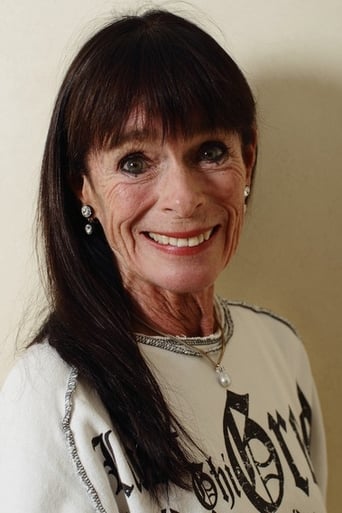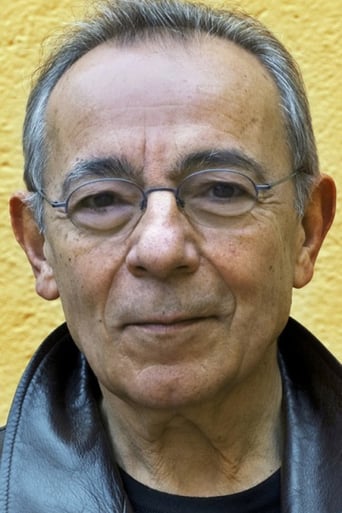Lucybespro
It is a performances centric movie
AshUnow
This is a small, humorous movie in some ways, but it has a huge heart. What a nice experience.
Raymond Sierra
The film may be flawed, but its message is not.
ma-cortes
Glamorous and luxurious movie with a good cast , such as Paz Vega , Leonor Watling , Eusebio Poncela , Geraldine Chaplin , Manuel Morón , Francesc Garrido , José Luis Gómez , Andrés Gertrúdix and Ángel De Andrés López . Being a thought-provoking drama based on the life of Spain's mystic Saint Teresa , set in the Catholic Castilla , in the middle of the Sixteenth Century . It concerns about Saint Teresa of Jesús , baptized as Teresa Sánchez De Cepeda y Ahumada (28 March 1515 – 4 October 1582) , focusing her sufferings , sacrifices , raptures and set in times of religious pursue , Reform , Contra-Reform and Santo Oficio . Teresa was a prominent Spanish mystic , Roman Catholic saint , Carmelite nun and author during the Counter Reformation , and theologian of contemplative life through mental prayer . Set in Castilla and dealing with the struggles against all odds in foundation her first convent , claiming that she has visions with Jesus , about the hard reform the Order of Carmelites and , subsequently , attracting the attention of the Inquisition during the sixteenth century Spain . As the daughter of a nobleman (Alvaro De Luna) Teresa De Ahumada (Paz Vega) joins a convent administrated by the Superior Mother (Geraldine Chaplin) seeking a spiritual life . After a period of apprenticeship and prays , she becomes a reformer in the Carmelite Order of her time and the movement she initiated , later joined by Saint John of the Cross , eventually led to the establishment of the Discalced Carmelites , though neither she nor John were alive when the two orders separated . The flick also concerns about her relationships to important people as Francisco De Borja (Javier Mejia) , Fray Daza (Eusebio Poncela), Fray Alcántara (José Luis Gómez) and bishop of Toledo (Angel De Andrés López) . Teresa was named a Doctor of the Church by Pope Paul VI . Her books, which include her autobiography : The Life of Teresa of Jesus and her seminal work The Interior Castle , and The Way of Perfection are an integral part of Spanish Renaissance literature as well as Christian mysticism and Christian meditation practices . At the beginning of the film Teresa , who is the daughter of a nobleman has a socialite life , has suitors who fight for her by fencing . Later on , Teresa fascinated by accounts of the lives of the saints joins a convent administrated by the Superior Mother seeking God and a spiritual as well as peaceful life . As Teresa entered a Carmelite Monastery of the Incarnation in Ávila , 1535 , but she found herself increasingly in disharmony with the spiritual malaise prevailing at the monastery . After a period of prays and sacrifice in which she embraces a deeper devotion to the Virgin Mary as her spiritual mother , she claims that she has visions with Jesus attracting the attention of the Inquisition in times of religious pursue and Protestant Reform . In the cloister -an area where only monastics have access- , she suffered greatly from illness ; early in her sickness, she experienced periods of religious ecstasy through the use of devotional books and prays . Saint Teresa carried out mystic attitudes following the example of similar writings of medieval mystics , consisted of directions for examinations of conscience and for spiritual self-concentration and inner contemplation . She claimed that during her illness she rose from the lowest stage, "recollection", to the "devotions of silence" or even to the ¨Mysticism¨ and "devotions of ecstasy", which was one of perfect union with God . During this final stage, she said she frequently experienced a rich "blessing of tears" . She , then began to inflict various tortures and mortification of the flesh upon herself . But her confessor, the Jesuit Saint Francis Borgia , reassured her of the divine inspiration of her thoughts . Teresa became firmly convinced that Jesus Christ presented himself to her in bodily form , though invisible.A dramatic film based on the life of Spain's feminist mystic Saint Teresa , regarding her self-punishments , lashings , mortification , raptures and about her early days when Santa Teresa schemes the creation a first convent called San José . This Spanish movie turns out to be an acceptable flick , but slow-moving , being a moving portrayal of the greatest religious woman , made in enough budget , including colorful cinematography and sensitive score . This picture contains a lot of historical remarks , adding known characters of the Spain history . The film was panned by critics , suffering the extreme contempt , being really scorned by focusing excessively in erotic/religious visions . It packs a glamorous cinematography by the prestigious cameraman José Luis Alcaine . Luxury scenarios , mostly interiors , including brilliant costumes and spectacular production design by Rafael Palmero , ; in fact, the movie is dedicated in memoriam to this classic designer . Religious and evocative musical score by two great composers : Ángel Illarramendi and Michael Nyman . Directed by Ray Loriga who made a passable but really boring film . Other films regarding this famous Saint are the followings : ¨Teresa De Jesús¨(1962) by Juán De Orduña with Aurora Bautista , José Bódalo , Roberto Camardiel , Antonio Durán , Alfredo Mayo and ¨Teresa¨ (2015) by Jorge Dorado with Marian Alvarez , Carla Diaz , Terele Pavez , Antonio De La Torre , Aitiana Sanchez Gijón . And the best results to be the TV series ¨Teresa De Jesús¨ (1985) by Josefina Molina with Concha Velasco , Virginia Mataix , Silvia Munt , Maria Massip , Magui Mira.
jotix100
The mystic figure of Saint Teresa of Avila, a woman from wealth, who renounced all that life had given her in exchange for one of prayer and writing some of the best works of the so called Golden Age of the Spanish literature, remains an elusive figure after seeing this film.Teresa Sanchez de Cepeda y Ahumada, born in the province of Avila, in 1515. Her paternal grandfather was a Jew, who converted to Catholicism and later was condemned by the Inquisition for going back to the faith in which he was born. Her whole family was connected, in one way, or another, to the Catholic Church. Her time was one of turmoil as the Holy Inquisition was a force to be reckoned with in the Iberian peninsula.When Teresa decided to join a convent, she was seen as one of the different women because of her coming from privilege. Her life went to change dramatically as she started getting visions that involved her close connection with Christ, something that drove her to become deathly sick. In her ecstasies, Teresa imagined Jesus in ways no other nun saw him, something that did not sit well with the mentality of the Spain of the 16th century. With the help of her good friend, Giomar De Ulloa, Teresa went to fund her own convent, a stricter form of the Carmelites. She also wrote extensively and her "Song of Songs" is one of the most treasured pieces in Spanish literature.Ray Loriga, a writer that has worked extensively in Spanish cinema, wrote the basis of this film, as well as directed it. Mr. Loriga is no doubt a man of refined talent. The basic problem with the film seems to lay in the casting of the main role. Paz Vega, a sensual actress, feels as though she is out of place as Teresa. Leonor Watling is seen as her friend Guiomar, who could have been a lesbian, as played by this actress. Geraldine Chaplin, Eusebio Poncela, and the rest of the supporting cast do their best for the director.Rafael Palmero's artistic direction must be mentioned. He is blessed with working in the same places where Teresa lived and worked. Same could be said about the cinematographer, Jose Luis Alcaine, who gives us great views of Avila and interiors that are suffused with the kind of light associated with famous painters like Vermeer, or Georges De La Tour. The music score is credited to Angel Illarramendi and Michael Nyman. What the film lacks in its narrative it makes up in the beautiful images the director incorporated, which does not compensate for the overall feeling of a static movie.In spite of Mr. Loriga's good intentions, Saint Teresa remains an enigma for most of the audience.
lelia-agostinho
I loved it because it's about the spirit, it's beautiful and never boring. We like to believe we live in a very open-minded time but Teresa, today, would probably be a psychiatric patient. This film is not a biography, and it's not really a story that is being told. This is about spirit. Teresa is dealing with the spirit through her life and this is strange enough when we must believe in matter and stories are about events chained in a logical way to look real. Real and unreal are no important matters here. The same spirit can divide or not divide concepts as life and death. Teresa knows the whole. Watching this movie can really open our mind.
RResende
Perfectionist work, useless in the thoughts behind.This one has some interesting elements, from some points of view, despite its (various) flaws. Whoever produced it knew the effect that Paz Vega can have, and places her here with her character of "Lucía y el Sexo" in mind (so, in this sense, this film could only have her in the title role). As Lucía, she was (along with the sexual tension she also helped creating) one of the main agents in the generation of the whole film in the mind of the writer. A somehow satellite character, though essential to the plot. Here, she is brought to the center of that plot, the same sexual tensions are kept, and what is generated is the evolution of her inner fight and the way the world outside Teresa watches those evolutions. That world also includes us, viewers, who put our own (eventually not)religious conceptions in judging her, just like the characters in the film. Anyway, even some aspects of the cinematography reveal some references to Medem's film (some landscapes overexposed to light, dreamlike, ideas generator mood).This is built through episodes, almost boards, biographical frescos. Biography facts are not interpreted, the inner fight is chosen. Alright with me, it's an option (rather contemporary in cinema). Also there is a great (to my view) religious conventionalism which, in spite, tries to strike you as something revolutionary and new. The "DaVinci Code" phenomena brought to a mainstream context the idea of "humanizing" religious characters, once untouched in their sacred biographies. The code did it with Christ (it was not new then, but than again, nobody knew it yet) and his supposed romantic involvement with Madalena. Here we get something flagrant, with assuming "possession" by the Christ as something with sexual connotations (Teresa playing Madalena in the Pietà shot is flagrant). But this is also OK, doesn't strike me as a new concept anymore, but it's an option.What upsets me here is the subtle manipulation that is intended:we get an historical character who became, in her time, one of the most solid symbols of the counter-reformation (the film even refers to the support with which she was granted by the Jesuits, themselves one of the most powerful and efficient agents of reformation, especially in Iberia, founded by the Spanish Loyola). That character, until now looked as a milestone of sanctity, rigor and return to traditions then forgotten, is here transformed in a character of free thinking, revolutionary who, against everybody, would fight for freedoms never dreamed of (woman's emancipation...). What upsets me is not the reinterpretation, but the incoherence with which she is placed in that specific world. Anyway, interesting to verify how each moment in time rewrites History before introducing it, completely crystallized, in the heads of that moments generations.What also occurred to me while i was watching this in a cinema room crowded with 8 people was how abstract was the medieval thinking (officialy this is post middle ages, but minds take time to follow). Anyway, death was decided based on the interpretation of completely abstract, non physical beliefs. Art was conquered since then by abstract thinking, but the common minds have evolved to become more and more in need of concrete objects to be guided.The other very interesting element has to do with cloth. One of this days i was reading a "I need to know" IMDb thread, and Mr. Ted Goranson asked for help to find films that use cloth as a cinematic element. Well this should be quite interesting for that matter. The story and Teresa's mental evolution and state of mind are told with great precision by the evolution of her cloth (i bare in mind the vivid red she wears as Madalena by Christ, the baroque initial dress and the texture of her final cloth).Than other not so important incoherences (films are practically all filled with them) such as filming the episodes of the life of a Spanish religious symbol in XVI century using a Portuguese monastery of several dates (including XVII century). This monastery is the spiritual core of temple knights Portuguese (strong) tradition, the one which was once rejected by the same kind of church thinking against which this reinterpreted Teresa fights. Coincidence? probably yes.The cinematography has a refined baroque quality, always pointing out through light and shadow the most important composition points. This is well crafted (as the overall production), i always remember the face side line always worked as a light line against a dark second plan. Gorgeous.My evaluation: 3/5 worth watching for elements referred, though not so well pacedhttp://www.7eyes.wordpress.com





